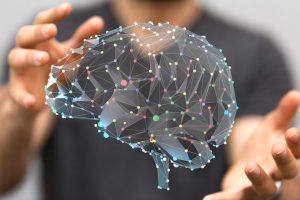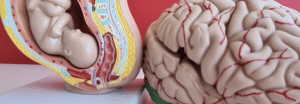
Pregnancy is a time of change in a person’s life, when the body undergo rapid physiological adjustments to prepare for motherhood – we all know this. But what has remained a mystery is what the extensive hormonal changes triggered by pregnancy do to the brain. Researchers in the laboratory of Professor Emily Jacobs at UC Santa Barbara have shed light on this under-researched area by creating the first map of the human brain during pregnancy.
Better Understanding of Neurobiological Changes
“We wanted to examine the development of brain changes specifically within the window of pregnancy,” said Laura Pritschet, lead author of a paper just published in Nature Neuroscience. Previous studies had taken snapshots of the brain before and after pregnancy, she said, but had never observed the pregnant brain in the midst of that metamorphosis.

The researchers followed a first-time mother, scanning her brain every few weeks, starting before pregnancy and continuing for two years after childbirth. The data, collected in collaboration with the team of Elizabeth Chrastil at UC Irvine, reveal changes in the gray and white matter of the brain during pregnancy, suggesting that the brain exhibits remarkable neuroplasticity well into adulthood. Their precision imaging approach allowed them to capture the dynamic reorganization of the brain in exquisite detail in the participant. This approach complements previous studies that compared the brains of women before and after pregnancy. The authors said their goal was to bridge the gap and understand the neurobiological changes that occur during pregnancy itself.
Gray Matter Decrease, White Matter Increase in the Brain
The most pronounced changes the scientists detected in the mapping of the brain of the subject over time were a decrease in the volume of cortical gray matter, the wrinkled outer part of the brain. Gray matter volume decreased as hormone production increased during pregnancy. However, a decrease in gray matter volume is not necessarily a bad thing, the scientists emphasized. This change could indicate a “fine-tuning” of brain circuits, similar to what happens to all young adults going through puberty, whose brains become more specialized. Pregnancy likely reflects a further phase of cortical refinement.
Less obvious, but equally significant, the researchers noted a significant increase in white matter, which is located deeper in the brain and is generally responsible for facilitating communication between brain regions. While the decrease in gray matter lasted well after birth, the increase in white matter was temporary, peaking in the second trimester and returning to pre-pregnancy levels around the time of birth. According to the researchers, this type of effect has never been captured before with before-and-after scans, which allows a better assessment of the dynamics the brain can undergo in a relatively short period of time.
The mother’s brain undergoes a choreographed change during pregnancy, and according to Jacobs, they are finally able to observe it. These changes suggest that the adult brain is capable of undergoing a prolonged period of neuroplasticity, or changes in the brain that can support behavioral adaptations associated with parenting. She argued that neuroscience of pregnancy should not be considered a niche research topic because the insights gained from it will deepen ‘our overall understanding of the human brain, including its aging process.‘
The open-access dataset, available online, serves as a starting point for future studies to understand whether the extent or rate of these brain changes provides clues to a woman’s risk for postpartum depression, a neurological condition that affects about one in five women and for which early detection is difficult. The more we learn about the maternal brain, the better the chances of providing a remedy.
And that is precisely the goal the authors have set for themselves. With the support of the Ann S. Bowers Women’s Brain Health Initiative, led by Jacobs, their team is building on these early discoveries as part of the Maternal Brain Project. At UC Santa Barbara, UC Irvine, and in an international collaboration with researchers in Spain, more and more women and their partners are being enrolled. Experts in neuroscience, reproductive immunology, proteomics, and AI are joining forces to learn more than ever about the maternal brain. Together, the scientists have the opportunity to address some of the most pressing and least understood issues in women’s health.


